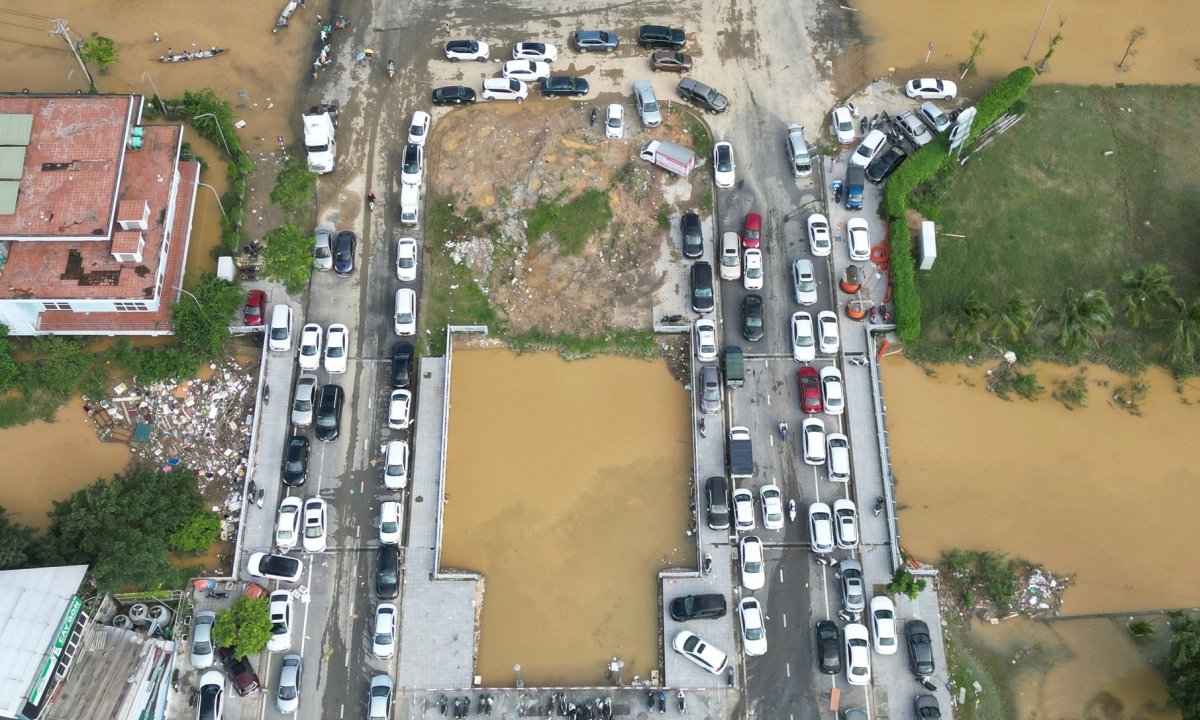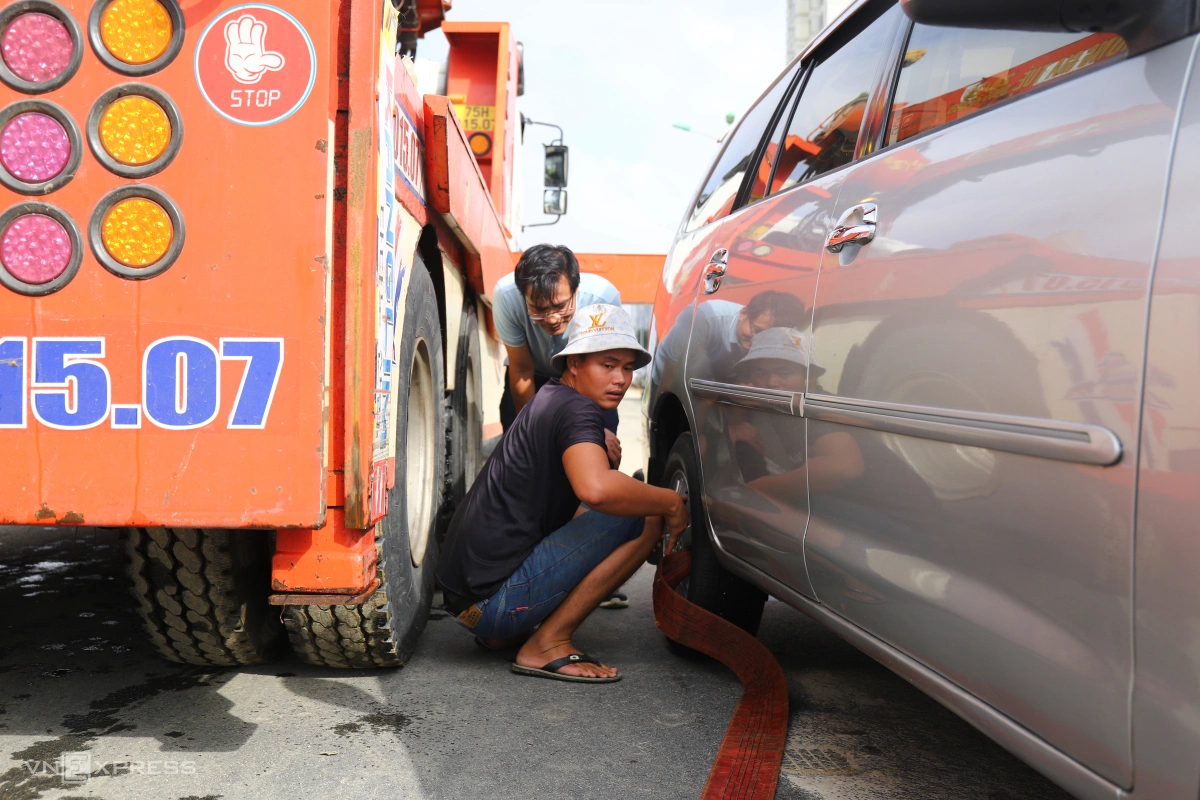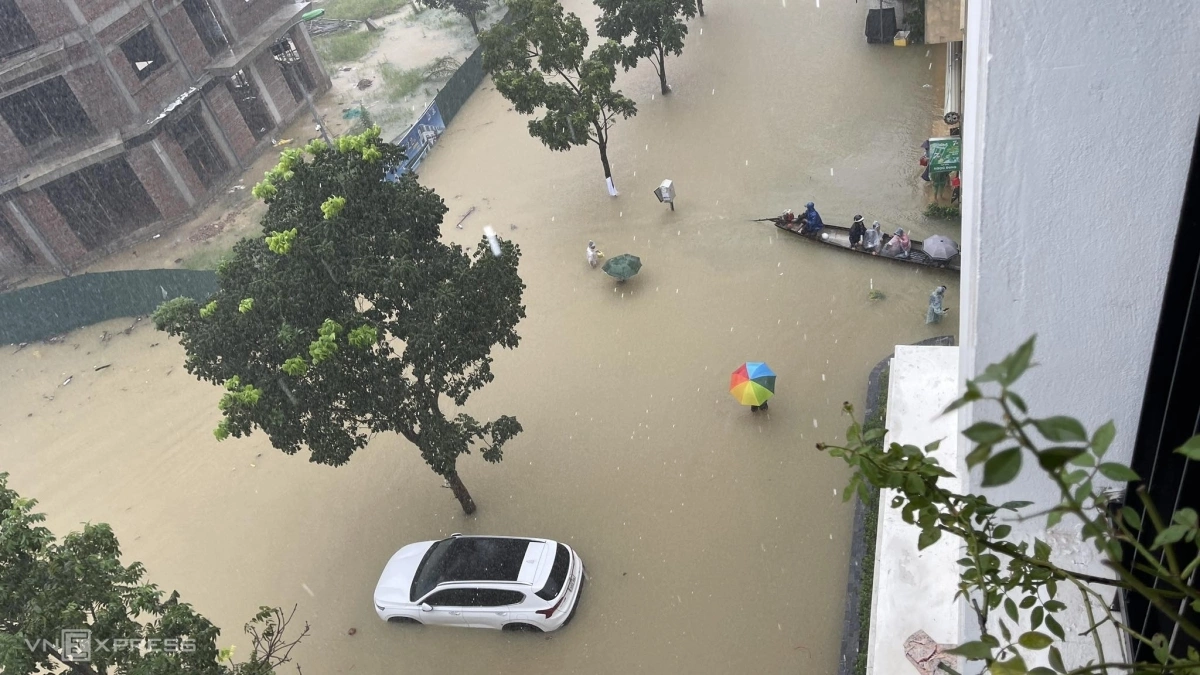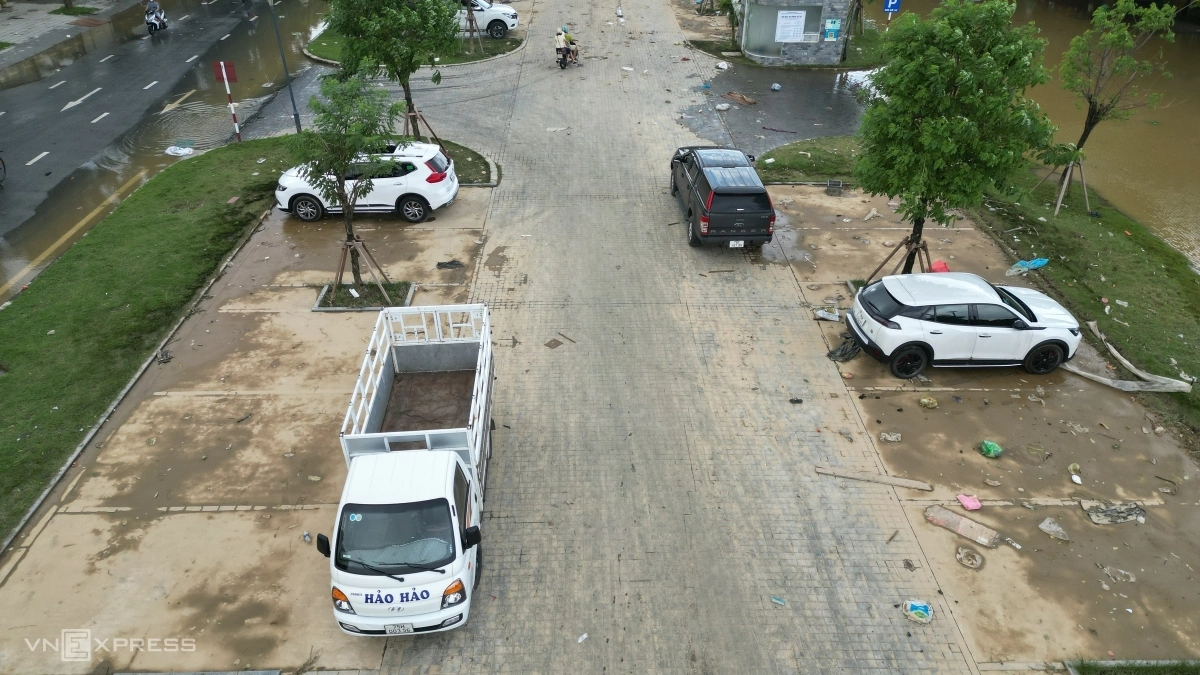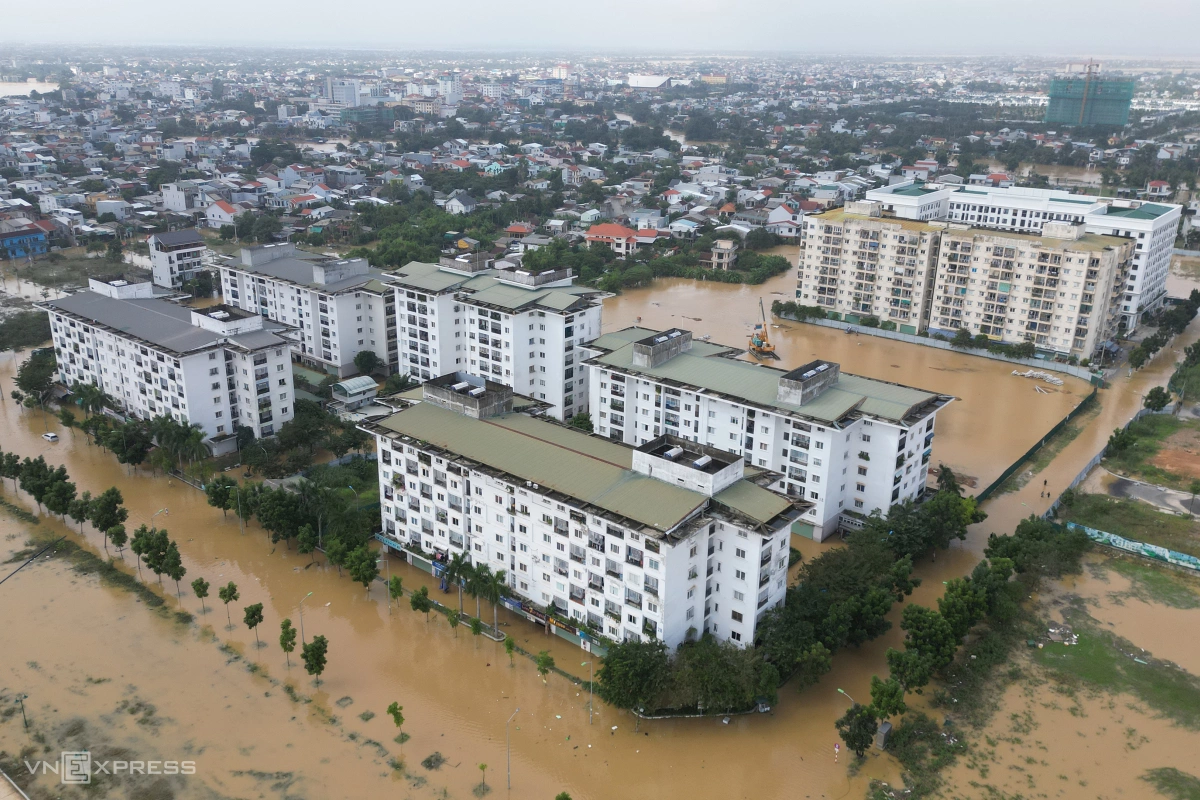At 4 a.m. on Friday, the water level of the Huong River flowing through Hue dropped to 2.24 m, which is 2 m lower than the flood peak on the evening of Nov. 15.
The flooded area in Thua Thien Hue Province, home to the city, decreased from more than 17,000 houses to around 5,600.
In Hue, the flood has receded and people are rushing to clean up the aftermath. However, after two days of flooding, a series of car have now stalled, blocking roads and bridges, causing traffic jams, as seen in this photo taken on Kiem Hue Bridge.
Local people had brought their cars to the bridge on To Huu Street to protect them from flooding, but the floodwaters rose too fast and high, so all of the cars were water-logged.
A rescue worker uses cables to hook the wheels of a car before hoisting it.
Many car owners had to call rescue services to take their cars to the garage for repairs.
A car with a dead engine was picked up by a rescue vehicle and taken to the garage. There are more than 100 stalled cars on To Huu Street alone.
Torrential rains have been lashing central Vietnam since Monday due to the impact of a mass of cold air, with Thua Thien Hue among the localities being hit hardest.
Several places in its capital Hue City received more than 800 mm rainfall in 24 hours, and the entire city was flooded on Wednesday night.
By Wednesday night, the city lying at the downstream of the Huong River was inundated by 0.5-1.2 m, with 8,500 houses submerged by 0.8-1.2 m. Two people in Hue have died and another remains missing.
In addition to cars, a series of motorbikes were abandoned in the floodwater as their owners did not have time to evacuate them.
According to locals, compared to previous years, the floodwater rose very quickly this year.
After just a few hours on the night of Nov. 13 and early morning of Nov. 14, their houses were submerged by over 1 m.
The central region usually suffers floods from September to late November.







